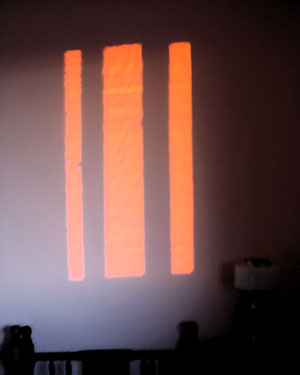Two weeks to vacation. Counterpart in a pissy mood today – “oh how hard we work, how difficult our job… Some days it is not so bad, in fact some days we approach friendliness. Other days, and more often, it is the bitterness. So much bitterness; that of lost empire and glory, that of disrespect, that of constantly just getting by. In some ways I sympathize. After all, our teachers are some of our most valuable assets; disrespect them and disrespect the future. But other times the sympathy doesn’t come. Instead one views their cowing toward authority and thinks, “well, I guess this is what you get when you refuse to speak up.” And though some may say that this is just a hangover from prior days, I would argue that it is more. Obsequiousness now breads obsequiousness tomorrow; though the students know better, they have no idea how to make it so. It is a tragic cycle in which only the most corrupt and cynical seem to survive, woe be the idealist of any stripe. But then again, this is not my land, these are not my people. But one leaves with the troubling thought that the process of corruption is no longer mandated from upon high, rather chosen consciously as a means of survival. Which is more terrifying?
Category Archives: Peace Corps Romania
Autumn Sunlight

Fun Cool Poetry
Okay, this should be the last post of this type, but this time let’s look at poetry. Since poetry is a tough one to teach, I want to go with poems that are fun, musical and meant to be read/performed. For instance, the classic, “Casey at the bat,” is really a concise short story. Others I’ve already chosen are ee cummings, some Seuss and Brooks’ understated, “We Real Cool.” Throw at me some poetry that you recall, stuff that is your favorite, fun and that students are likely to dig. And thanks 😉 daddio.
Directions
Leaving school one day, I found myself walking behind a little old lady on the narrow sidewalk. Moving around her, I took a look back; I can’t get her face out my mind. She was, it appeared, an old Romanian peasant. Her clothes covered up her entire body, she wore a shawl, full length apron, and was ambling along slowly hunched over a rough cane. Though there are doubtless thousands of women who look like her here in this country, the fact that she happened to be directly outside of the school where I teach really hit home.
The city where I work is a beautiful and well-kept Transylvanian town. Due to the large Hungarian influence in this region, the buildings in the center, where my school is located, take on a grand style. Contrast this to many other parts of the country which are either very rural, or developed in the Communist style.
This old woman probably lived in one of the houses in the center that had miraculously survived systemization. Indeed, it is an odd sight to see, on the same street, a grand 19th century house complete with façade, a concrete apartment block and a little ramshackle peasant’s house. We don’t really have this in the United States, at least not within such concentrated areas. It reminds me of the history of this place, just how far things go back, and that life here has been and is very different. Who knows if I’ll see that old lady again, but perhaps I’ll slow down a bit and see what else awaits.
Follow Up
Thanks for the overwhelming responses to the “Uniquely American” post.
I had my students vote which topics most interested them and as a result I will be taking many of your suggestions and making them into lesson plans! I will contact some of you with specific questions. They also voted for a topic called “Famous Americans.” Of course, this one is wide open, so again, let’s solicit answers. If you could teach about, say 3 – 5 famous Americans, who would they be?